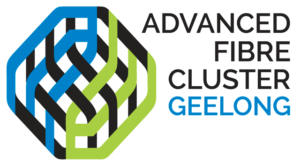Fibres and composites transforming industry – why clusters matter by Jennifer Conley

@AuManufacturing’s editorial series – fibres and composites transforming industry – looks at how networking and clustering among Australia’s generally SME manufacturers can help build scale in a global sector like advanced materials. Here Jennifer Conley of the Advanced Fibre Cluster Geelong discusses what can be achieved through collaboration.
Australia has been riding a long wave of natural resource success, making us a rich country – 12th in the world in GDP terms.
But in aggregate terms we fail almost every measure of economic complexity. We dig it up or grow it. We tend not to transform it.
Aggregate statistics of course do not show you the brilliance that occurs within our predominantly small and medium sized manufacturing companies.
Around 98 per cent of Australian businesses employ 20 people or less.
Yet our innovators and engineers, our entrepreneurs, our SME manufacturers produce remarkable results.
There are serious challenges, however, to being a “small business nation”.
Large companies drive the translation of important research into commercial success – because big companies (like rich countries) have deeper pockets.
The lack of scale of most Australian companies means many of our technologies and innovations languish in the early stage or they go offshore.
Industry clusters are dangerously underrated in Australia
International experience has shown the most effective way to accelerate commercialisation is through specialised “intermediary” activities such as formally organised industry clusters.
Clusters are not new, but they are rare in Australia.
Despite the trickier needs of our fragmented industry, Australia dangerously underrates clusters. In Western Europe and Scandinavia as well as other advanced manufacturing nations, there are thousands.
By facilitating inter-firm collaboration and linkages with educational and research institutions, government-supported clusters act like modems do in computing – they connect and translate distinct languages and facilitate knowledge sharing.
One recent research project into the development of the video game industry in Montreal described the “common places, spaces, events and projects” enabled by clusters as the critical “middleground” in a resilient innovation ecosystem.
Without some form of commitment to build a middleground, there is no common platform for knowledge exchange in the ecosystem, between the SMEs, the large multinational companies, the start-ups, and the research and education sectors.
The Advanced Fibre Cluster Geelong was built on the shoulders of this growing body of understanding of how to build competitive advantage.
The Advanced Robotics for Manufacturing (ARM) Hub is another brilliant example. And there are similar clusters forming around hydrogen and clean technology innovation like the well-regarded Victorian Cleantech Cluster.
The latest push to develop clusters has come mainly from enlightened state governments. The AFCG came together with Victorian Government support two years ago, focused on the superior knowledge, skills and infrastructure which exist in Geelong around advanced fibre and composites technology.
At a local level, formally structured clusters build pathways to growth by continuously connecting the various elements of the ecosystem.
However, from a national perspective, they can solve some of the economies of scale challenges faced by our export-oriented SME manufacturers, many of whom are establishing leading edge global reputations.
Untraded benefits of clustering extend to the sharing of resources, access to excess materials and idle equipment, to increased buying power, and to the identification and acceleration of relevant skills.
Big companies and industries tend to determine the skills training packages in Australia, for example.
Clusters bring SMEs together meaningfully with our technical and higher education sectors to identify and address Australian manufacturing skills needs more effectively.
Australia’s manufacturing success will depend on doing better at commercialising our world class research and doing it here in Australia.
This means nationally, our value-adding industries require dedicated support for translational activities like clusters, as part of a coherent strategy.
The UK Government’s Catapult Network recently concluded a review of its first decade and found that the Catapults should do more to support innovation clusters and local economies.
Governments can help seed these “connecting tissues” and leverage them to ensure growth of our regions and capabilities.
The AFCG exists because of a few dedicated enthusiasts who understood the value of collaboration – of creating the valuable spaces for interaction – and because it was given vital support by Deakin University and by State and local governments.
Getting behind smart specialisation clusters will go a long way towards stabilising and expanding Australian industry post-Covid-19.
Jennifer Conley has two decades’ experience at the intersection of industry, research and government. She works with companies and organisations to achieve competitive advantage, champion Asia-Australia linkages. Conley is Chief Executive Officer at Advanced Fibre Cluster, Geelong.
@AuManufacturing’s editorial series – fibres and composites transforming industry – is brought to you with the support of ThermoFisher  Scientific and the Advanced Fibre Cluster Geelong.
Scientific and the Advanced Fibre Cluster Geelong.
Picture: Jennifer Conley
Subscribe to our free @AuManufacturing newsletter here.
Topics Technology
@aumanufacturing Sections
Analysis and Commentary Awards Defence Manufacturing News Podcast Technology Videos







